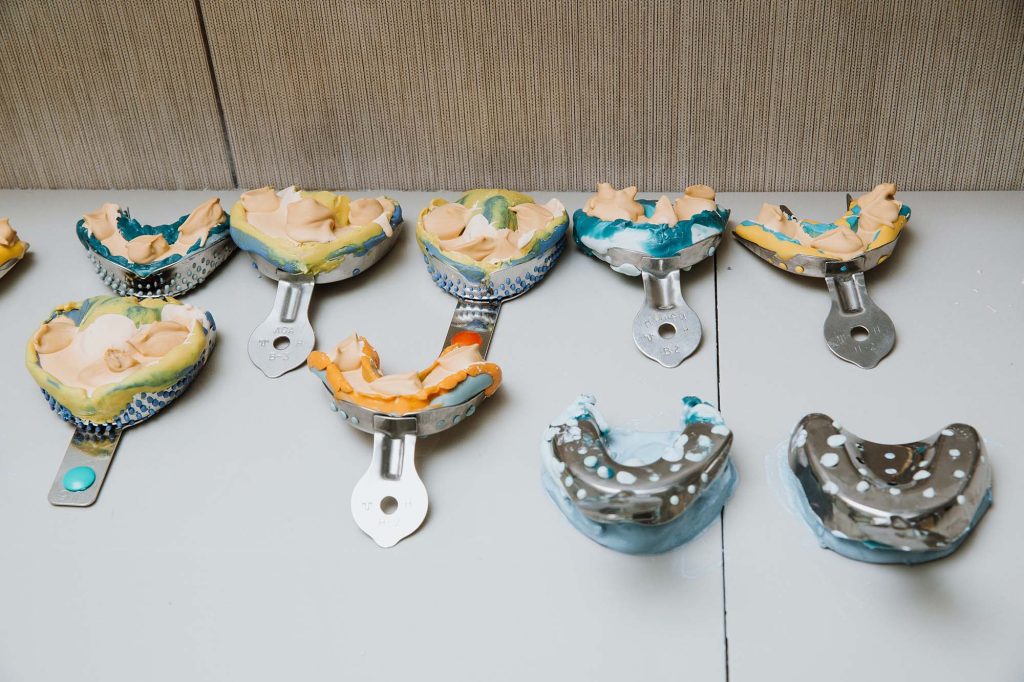
Dental Impression Trays: Understanding Their Uses
If you’ve ever had to get a crown, bridge, or denture, you’ve likely undergone a dental impression. This procedure involves taking a mold of your teeth and gums to create a replica of your mouth that dentists use to create customized dental appliances.
Dental impression trays are an essential component of the dental impression process, and their importance cannot be overstated. They’re responsible for accurately capturing every detail of your mouth, so your dental appliance fits correctly and feels comfortable.
In this article, we’ll explore the different types of dental impression trays and their uses. We’ll also answer some common questions about dental impression trays and provide tips on how to care for them.
Table of Contents
- Types of Dental Impression Trays
- Uses of Dental Impression Trays
- How to Choose the Right Dental Impression Tray
- Tips for Using Dental Impression Trays
- How to Care for Dental Impression Trays
- Dental Impression Trays: Understanding Their Uses
- FAQs
- Conclusion
Types of Dental Impression Trays
Dental impression trays come in different shapes and sizes, depending on the specific needs of the patient and the dental appliance being made. The following are the most common types of dental impression trays:
Stock Trays: Stock trays are pre-made, off-the-shelf trays that come in different sizes and shapes. They’re the most affordable type of impression tray and are ideal for simple dental procedures.
Custom Trays: Custom trays are made specifically for each patient and are designed to fit perfectly over their teeth and gums. They’re the most accurate type of impression tray and are ideal for complex dental procedures.
Perforated Trays: Perforated trays have small holes in them that allow excess impression material to escape, resulting in a more accurate impression.
Plastic Trays: Plastic trays are made from a type of plastic material and are commonly used for making provisional restorations or in situations where the dentist needs to make multiple impressions.
Metal Trays: Metal trays are made from stainless steel or aluminum and are reusable. They’re ideal for taking impressions of the back teeth and are commonly used for making full dentures.
Uses of Dental Impression Trays
Dental impression trays are used in a variety of dental procedures, including:
Crowns and Bridges: Dental impression trays are used to make impressions of teeth before crowns or bridges are made. The impression is sent to a dental laboratory where the crowns or bridges are fabricated.
Dentures: Dental impression trays are used to make impressions of the entire mouth before dentures are made. The impression is sent to a dental laboratory where the dentures are fabricated.
Orthodontics: Dental impression trays are used to make impressions of teeth before orthodontic treatment begins. The impressions are used to create custom-made orthodontic appliances such as braces or aligners.
How to Choose the Right Dental Impression Tray
Choosing the right dental impression tray depends on several factors, including:
- The type of dental procedure being performed
- The patient’s specific needs
- The dentist’s preferences
Your dentist will choose the right impression tray based on these factors and their expertise.
Tips for Using Dental Impression Trays
Here are some tips for using dental impression trays:
- Follow your dentist’s instructions carefully.
- Practice good oral hygiene before the procedure.
- Be patient and relax during the procedure.
- Don’t eat or drink anything before the procedure.
- Wear comfortable clothing.
How to Care for Dental Impression Trays
Taking care of your dental impression trays is essential to ensure
the accuracy of your dental impressions. Here are some tips for caring for your dental impression trays:
- Rinse your trays with cool water after each use.
- Clean your trays with a soft-bristled brush and mild soap.
- Don’t use hot water, as it can cause the trays to warp or deform.
- Store your trays in a dry, cool place, away from direct sunlight.
- Don’t use abrasive cleaners or harsh chemicals to clean your trays.
Dental Impression Trays: Understanding Their Uses
Dental impression trays are an essential component of the dental impression process. They’re responsible for accurately capturing every detail of your mouth, ensuring that your dental appliance fits correctly and feels comfortable. Without them, the accuracy and precision of dental impressions would be compromised, leading to ill-fitting dental appliances that can cause discomfort and even pain.
FAQs
How do I know which type of dental impression tray to use? A: Your dentist will choose the right impression tray based on the specific needs of your dental procedure, your mouth’s unique characteristics, and their expertise.
How long does it take to take a dental impression? A: Dental impressions typically take around 5-10 minutes to complete.
Are dental impression trays reusable? A: Some dental impression trays are reusable, while others are disposable. Your dentist will determine which type is appropriate for your procedure.
How do I know if my dental impression is accurate? A: Your dentist will be able to tell if your dental impression is accurate by examining the mold and checking the fit of your dental appliance.
Can I use dental impression trays at home? A: Dental impression trays should only be used under the supervision of a qualified dental professional.
How often should I replace my dental impression trays? A: The lifespan of dental impression trays depends on their material, frequency of use, and how well they’re cared for. Your dentist will advise you on when to replace your trays.
Conclusion
Dental impression trays are an integral part of the dental impression process, ensuring that dental appliances fit correctly and comfortably. There are different types of dental impression trays, each designed for specific dental procedures and patient needs. It’s important to choose the right tray, follow your dentist’s instructions carefully, and care for your trays properly to ensure accurate and precise dental impressions.

